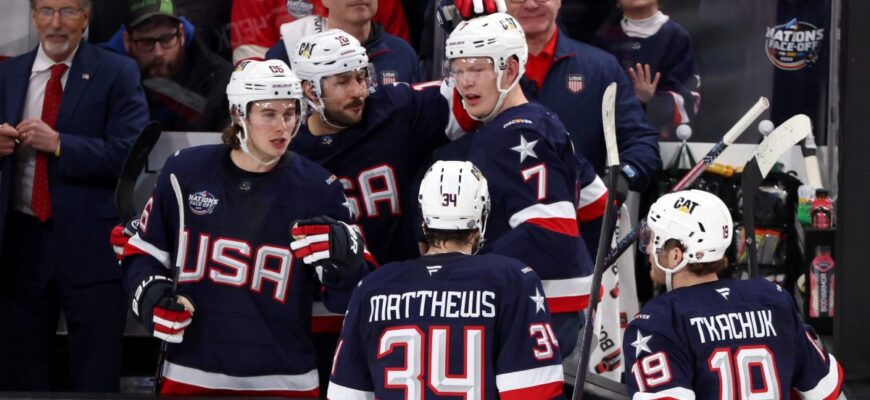The distant echo of skates on Olympic ice, accompanied by the roar of a united crowd, has been a longing sound for hockey enthusiasts worldwide. After a significant hiatus, the return of NHL players to the Winter Olympics in Milan Cortina in 2026 is not merely anticipated; it’s a momentous occasion. While an initial orientation camp in Calgary recently showcased a pool of 42 elite players, and a select few like Connor McDavid, Sidney Crosby, Nathan MacKinnon, and Cale Makar already possess virtual golden tickets, the true challenge and intrigue lie in filling out the rest of Team Canada`s formidable roster. It`s here, in the shadows of superstar luminescence, that the most compelling stories often reside.
The Allure of the Underdog: Defining the Dark Horse in Hockey
In the realm of elite sports, a “dark horse” is a competitor whose chances of success are not initially obvious, often underestimated, but who ultimately performs beyond expectations. For Team Canada`s 2026 Olympic hockey roster, these are the players who, despite not receiving an invitation to the initial orientation camp, possess the raw talent, consistent performance, or unique skill set that could propel them onto the world stage. Their inclusion would be a testament to a meticulous selection process that extends beyond established hierarchies and current popularity, prioritizing genuine on-ice effectiveness.
It`s easy to focus solely on the titans of the game, those whose names are synonymous with hockey excellence. However, history repeatedly demonstrates that championship teams are forged not just from superstars, but also from complementary pieces—the specialists, the unsung heroes who execute critical plays under immense pressure. Consider the 2024 4 Nations Face-Off, where Thomas Harley, initially an injury replacement, unexpectedly became a pivotal defenseman for Team Canada. Such narratives underscore the potential for the overlooked to become indispensable. The art of team building, it seems, often involves identifying talent where others might not initially look.
Strategic Depth: Beyond Egos and Sheer Star Power
The task of assembling a national team is inherently complex. It requires more than simply gathering the 25 most talented individuals. As Head Coach Jon Cooper subtly implied regarding team dynamics, the mandate for an Olympic squad is often to “check your egos at the door.” This speaks to the absolute necessity of cohesion, role acceptance, and a collective commitment that transcends individual accolades. A dark horse, perhaps less accustomed to the relentless spotlight, might possess an inherent adaptability or a willingness to embrace a specialized role that serves the team`s overarching strategy with quiet efficiency.
Selecting a team for an international tournament means considering diverse, often highly technical, requirements that go beyond pure point totals:
- Special Teams Proficiency: Exceptional penalty killers, precise power-play quarterbacks, and dominant face-off specialists are invaluable assets, capable of swinging momentum.
- Defensive Acumen: Not every forward needs to be a prolific scorer; some are chosen specifically for their relentless backchecking, positional awareness, and responsible defensive play.
- Physicality and Grit: The Olympic stage is intensely competitive, demanding players who can consistently win battles along the boards, endure physical punishment, and establish a net-front presence.
- Versatility: Players capable of seamlessly shifting between wing and center, or even competently playing both sides of the defense, offer crucial tactical flexibility for coaches.
The Pathway to Milan: How Underrated Talents Can Ascend
For those aspiring `dark horses` not yet firmly on the Hockey Canada radar, the path to the 2026 Olympic roster is narrow but not entirely blocked. It hinges primarily on their performance during the upcoming NHL season, a crucible designed to test consistency and resilience:
- Dominant Start to the NHL Season: A torrid scoring pace, exceptional defensive analytics, or a significant rise in their team`s performance attributable to their play in the first few months can force selectors to take immediate notice. Sustained excellence is the most direct and undeniable route.
- Capitalizing on Opportunities: While regrettable, injuries to incumbent front-runners can open critical roster spots. A dark horse who steps up significantly in such a scenario, demonstrating capability and composure under pressure, effectively argues their case for prime time.
- Developing a Niche Skill: Becoming demonstrably elite in a specific, high-demand area—be it shot-blocking, defensive transitions, precise passing, or clutch scoring—can create a unique value proposition that fills a strategic void on the team.
- Consistency Under Pressure: Performing reliably and effectively in high-stakes situations for their NHL club, particularly in important games, proves they can handle the immense pressure cooker of international Olympic play.
The Unpredictable Narrative of Olympic Glory
The narrative of Olympic glory is often punctuated by unexpected heroes, tales of individuals who rise from relative obscurity to etch their names into history. While media and fans naturally gravitate towards the established superstars, the journey to a gold medal requires a complete, meticulously constructed team. The search for Canada`s dark horses is therefore not just a speculative exercise; it’s a pragmatic acknowledgment of the immense depth of talent within Canadian hockey and the strategic necessity of finding the right players to complement the untouchables.
As the 2026 Milan Cortina Games draw nearer, the hockey world will be watching, not only for the undeniable brilliance of the chosen few but also for the intriguing emergence of those who defied initial expectations to become instrumental in their nation`s pursuit of Olympic gold. The ice less traveled, indeed, often leads to the most surprising—and ultimately, most satisfying—victories.







